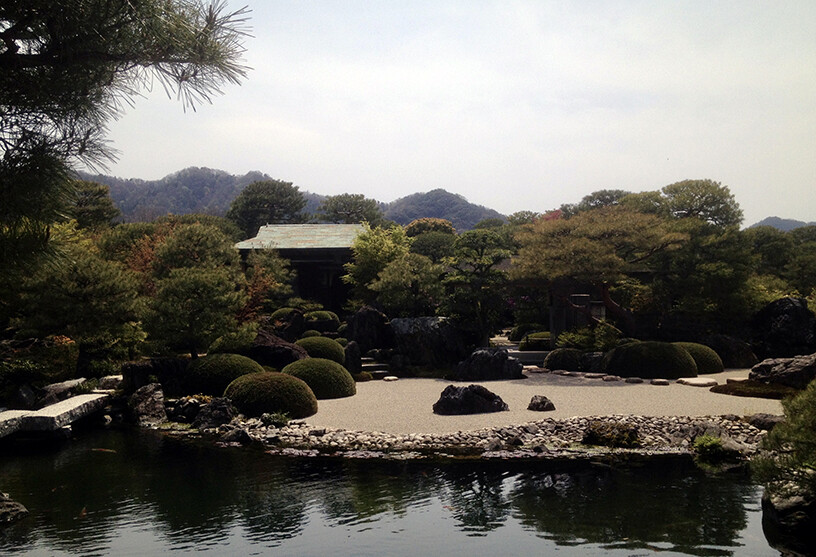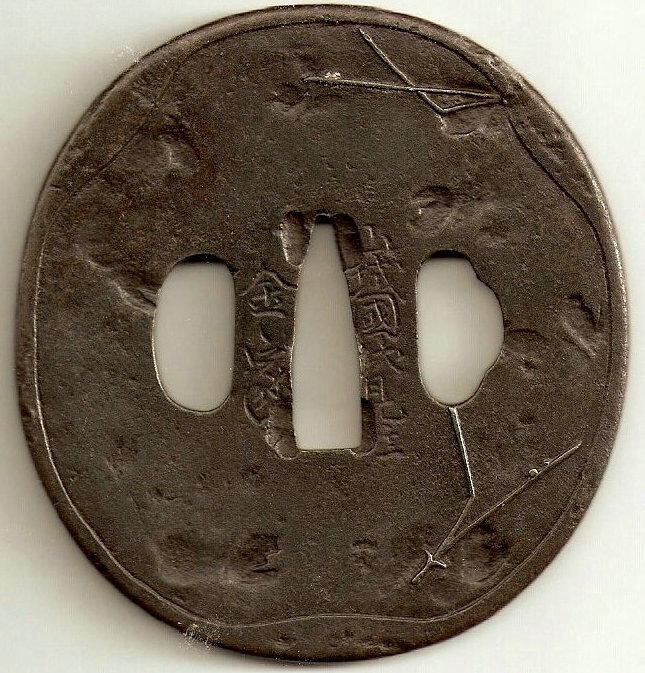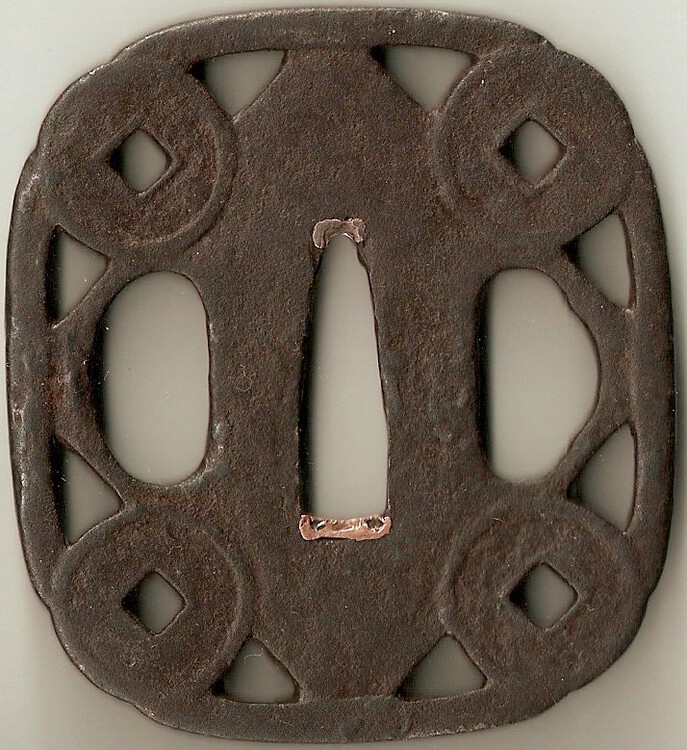-
Posts
2,875 -
Joined
-
Last visited
-
Days Won
3
Everything posted by Soshin
-
The tsuba looks to be fairly typical of sukashi done it the late Edo Period. The price is reasonable for a starter tsuba for someones collection, in good condition, but just nothing special. The points are critical about the price and condition as we are talking about eBay. Just to clear something up I often don't reply to posts in this forum because I don't have any useful information to provide not because a specific piece is low quality. Often young collectors need feedback about things they are considering to purchase or have already added to their collection. I tend to use the NBTHK Token Bijutsu monthly magazines as my information source of very high quality tosogu. Yours truly, David S.
-
I think you are correct in regards to the ko-sukashi design of a star constellation of seven stars forming a celestial dragon. The design is not complete enough to be shippo. Yours truly, David S.
-
From the looks of the tsuba in the photos. It looks like the tsuba has been cleaned and repatinated. I cannot confirm this without having the tsuba in hand and examining it closely under good lighting conditions. The complete lack of rust any and the color is good evidence of the repatination. I have a old tsuba like this from the Momoyama Period that was repatinated at some point awhile ago possibly in the Late Edo period after it was hit with a musket ball on the ura side and a iron sekigane added to kozuka hitsu-ana. It has much less rust then would be expected of such a old tsuba and the color is typical for Edo Period tsuba. It was likely completely cleaned and altered before it was repatinated. Overall I still like my tsuba as the iron is still really nice. I can confirm that there was a Bizen Shoami school active during the Edo Period. Yours truly, David S.
-
Hi Fred D., I would say that the tsuba is likely Choshu and would date it to the middle Edo period (ca. 1670 – 1770). I am sure a more complete judgement can be obtained from a formal shinsa via the NTHK or NBTHK. Overall I like the design and craftsmanship of the tsuba. Yours truly, David S.
-
Hi Mariuszk, I am going to abstain from this discussion for the most part after getting in trouble on another forum. Only thing I can say that this tsuba like the Myochin school tsuba I would love to own regardless of the fact that they are cast iron. Comparing these late Edo Period cast iron tsuba to Meiji Period tourist items is a bit like comparing Fuji Apples and Crab Apples. :D Yours truly, David S.
-
Here are three of my favorite tsbua I own as part of my tosogu collection. Included are some breif write up about each tsuba. Yours truly, David S.
-
Hi Hatanaka-san, Welcome to the Nihonto Message Board and I will bookmark your website and take a look at what you have to sell. This is fairly good place for information. I recommended checking out the forum search feature as well as the collection of links to other related website about nihonto and tosogu. Yours truly, David S.
-
Thanks for posting a wonderful Umetada tsuba. :D Gold inlay work along the mimi with a ji of shakudo is very nice. I have a few examples of the school's work in iron with soft metal inlays of brass (shinchu-zogan). What are the measurements including thickness for your tsuba that you posted for discussion? Yours truly, David S.
-
Thanks Carl for taking the time to photograph the other parts of the tanto koshirae. Overall I like the koshirae and I think it matches well and dates to the late Edo Period. The tanto itself likely dates earlier then the late Edo Period as the nakago looks like it has been shorted at some point. The multiple mekugi-ana is strong evidence as well as the lack of a mei. The original signature might have been lost when it was shorten. The Japanese term for this shorting of the nakago (i.e. tang) as well as the overall sword is suriage. Yours truly, David S.
-
This looks to be a real tsuba (i.e. not a Chinese reproduction). The design of the tsuba indicates that the tsuba likely dates to the late Edo Period. The condition is really poor likely due to neglect. Due to the presence of inlays you must be very mindful and careful with the rust removal process and not damage the soft metal inlays. Just my two cents. Thanks for sharing the tsuba for discussion. Yours truly, David S.
-
I would say the original age of tsuba to be middle to late Edo Period. The sukashi might be a recent modification (i.e Showa Period). As to what school I am not really sure. Hopeful someone more experienced would offer some advice. Yours truly, David S.
-
I would agree the sukashi doesn't look original. The tsuba openwork also don't show any of the normal signs of age. The sukashi looks similar to another tsuba I have which has added openwork. Below is the tsuba in question. I had a few fellow members of my local Japanese Sword club take a loot at my tsuba and consensus opinion was that it was a very old well forged tsuba (original owner dated it from the Momoyama Period) but that sukashi (openwork) was not original nor was the tsuba patina. The new patina was applied naturally (no chemical smell) not recently but after it was shot by a musket. Notice the rim damage in the lower section on the ura side. Yours truly, David S.
-
Hi Toru, I would first focus on the information and resources on this website first outside of the forum. There are some good information and sales sites in the links section of this website. I would then search the forum for any specific questions you might have via the use of keywords. I would do some web-surfing, reading, and research first. Try to join a semi-local club or go to some shows and see some real antique fittings before you purchase anything. Once you have did some research, looked at some antique Japanese sword fittings I would purchase a piece either from the sales forum or from a dealer found in the links page. Once you do purchase share it for discussion which I found to be a good learning experience. Yours truly, David S.
-
Hi John B., I really like the tsuba and thanks for sharing. I think the use of perspective is a technique first developed in painting that was carried over to some schools of tsuba making during the the middle to late Edo Period. All of the examples I have seen including my tsuba was made in the late Edo Period. Yours truly, David S.
-
I for one being a often western visitor to Japan would purchase such a tsuba. The lacquer appears to be well done. Adrian, please post some additional photos when you have the tsuba in hand. Here is a link to an example I came across which uses the similar lacquer technique on iron plate but is from a early time period then your tsuba: http://www.yamabushiantiques.com/BM%20Yamakichibei%20Tsuba.htm Yours truly, David Stiles
-
It is a really nice Namban tsuba. Thanks for posting on the forum for discussion. Learned something new about the legend that surrounds the design. Yours truly, David S.
-
Hi Ian, Thanks for providing some additional information. I now agree that the design motif of my tsuba is a kamon in the shape of a gunbai. Looking a the list of variant kamon provided that all have a gunbai in them the following is a exact match to the design on my tsuba: The resolution of scan prevents me from reading the Kanji for the family associated with kamon. Ian, could you provide a higher resolution scan of just this kamon that is a exact match to the design motif on my tsuba? Since the tsuba is of a specific family kamon then this tsuba might have been a custom piece which might also explain why it was not completely signed by the tsubako who made it. Another possibly is the sada (定) Kanji character is referring not to the tsubako in case of a incomplete mei but is associated with the person who might have commission the piece. Thanks again for everyone taking the time to help me. Yours truly, David S.
-
Interesting idea Henry, I was not aware of the meaning of the sada 定 Kanji and its association with Buddhist Samadhi. A constant "fixed" mediative state (i.e. Samadhi) is a common objective set in a Buddhist practice. I also wasn't aware that a gunbai was associated with Hotei. What role does the man with the gunbai have in a Sumo match? Is it possible a leadership or some role with authority? Thanks for the food for thought. Yours truly, David S.
-
Hi Thomas C., Thanks for the nice comment. :D The design reminded me of the high ranking samurai that would be directing the ashigaru (foot soldiers) during a battle using a large Gunbai (i.e. war fan) similar to the one featured on the tsuba. I find it interesting that a single kanji character (sada) 定 is written on the seppai-dai. Is it a partial mei or does it have some other meaning? Researching the tsubako that used (sada) 定 character in their name didn't get me very far. The shape and workmanship reminds me of the early generation Echizen Kiniai school. I don't know of any members of the school using the (sada) 定 character in the mei. Yours truly, David S.
-
Hi Rich K., The range of years I use for the late Edo Period are 1770-1870. Historically speaking the Edo Period official ended in 1868. But it is conceivable that some tsubako continued using the same styles during the Meiji Restoration up until the Haitorei in 1876. This was the stopping of Samurai from charing daisho while walking the street. The tsuba I posted dates from the same time period as yours. Yours truly, David S.
-
Hi Rich K., From looking at the photo you have and the description you have provided I would confidently say that it dates from the late Edo Period. The near black color of the patina and the color of the brass would indicate this. Older brass has a very different color. I recently sold a tsuba on the forum with a very similar color which dates from the late Edo Period. The detail and composition is also fairly good for the time period from which your tsuba was made. Take care. Yours truly, David S.
-
Hi Everyone; Here is a write up I am doing for a tsuba in my collection. I am still unsure what school or group this tsuba belongs to if any. The idea that the tsuba in the work of a independent artisan working in the early Edo period is possible. The iron of the tsuba is good quality with fine grain tekkotsu along the mimi. The surface is smooth (migaki-ji) highlighted all over with small dots called (ji-mon). These characteristics make me think is early Edo and not late Edo in age. Here is the write up and some scans. It was purchased on the Nihonto message board sale forum back in October of last year. The earlier owner was think it was a Tosho tsuba. I didn't know Toshu style tsuba used ji-sukashi like this in their designs. All questions, comments, and additional information is welcome. Yours truly, David S.
-
Based upon similar tsuba in my collection and what I have seen I would say early Edo Katchushi. I really like the tsuba. :D This is all just my opinion. The ko-sukashi designs I don't think are as complex as you see in the Umetada school during the early to middle Edo. The mimi is also characteristic of Katchushi. The provided Umetada example shows this more complex ko-sukashi design I am referring to as well as the difference in the mimi. Yours truly, David S.
-
I would agree with John I have a few late Edo Period Nara school tsuba and the plate isn't as clean as this tsuba is. The all silver fukurin (rim cover) also indicates a later production as well as sliver was rare in Edo Period Japan. I would say that it might be a modern (i.e. Meiji Period) copy of a Nara school work. With these Nara school pieces the quality for which there is a great range is clearly determined by the soft metal inlays and the overall composition. I was reading in the most recent book by Bob Haynes that tosho ( Japanese swordsmiths) would often forge the iron plates for Edo Period Nara school tsuba. Yours truly, David S.
-
I think this statement also generally applies to unsigned tosogu as well. If it papers then it will increase in value how much will depend on which school and/or historical period. If doesn't paper then for tosogu the value will likely decrease. I once purchased a tsuba that was modern cast copy from someone I don't think knew that it was a cast iron copy. Once I did some research and obtained more information I found out that it was a modern (i.e. Showa Period) cast iron copy of a middle to late Edo Namban tsuba. In the end I was out around a 100 US dollars. All in all a $100 lesson learned isn't that bad. I am sure other people might have different views I am just relating my own personal experience. Yours truly, David S.









